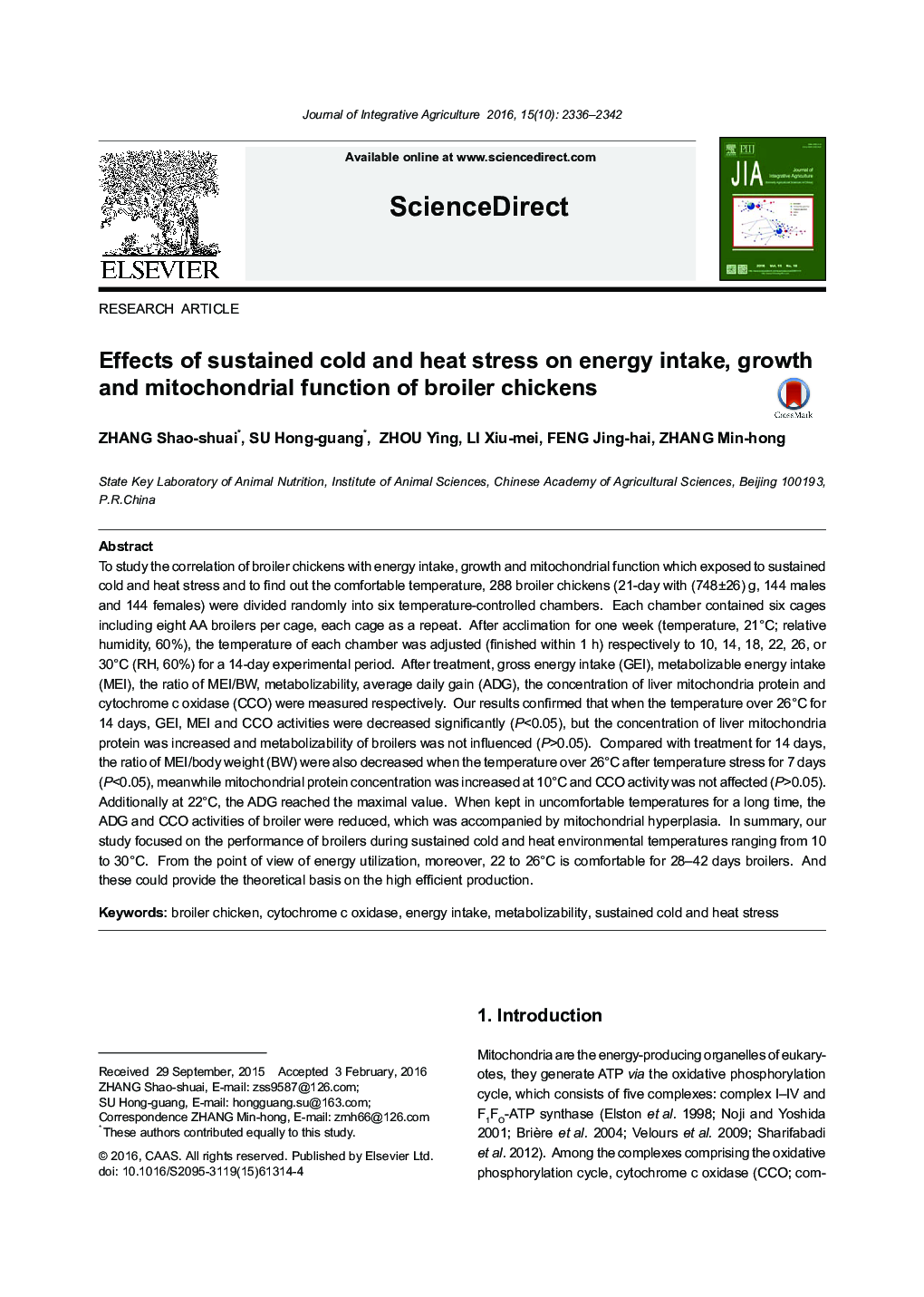| Article ID | Journal | Published Year | Pages | File Type |
|---|---|---|---|---|
| 4494066 | Journal of Integrative Agriculture | 2016 | 7 Pages |
To study the correlation of broiler chickens with energy intake, growth and mitochondrial function which exposed to sustained cold and heat stress and to find out the comfortable temperature, 288 broiler chickens (21-day with (748±26) g, 144 males and 144 females) were divided randomly into six temperature-controlled chambers. Each chamber contained six cages including eight AA broilers per cage, each cage as a repeat. After acclimation for one week (temperature, 21°C; relative humidity, 60%), the temperature of each chamber was adjusted (finished within 1 h) respectively to 10, 14, 18, 22, 26, or 30°C (RH, 60%) for a 14-day experimental period. After treatment, gross energy intake (GEI), metabolizable energy intake (MEI), the ratio of MEI/BW, metabolizability, average daily gain (ADG), the concentration of liver mitochondria protein and cytochrome c oxidase (CCO) were measured respectively. Our results confirmed that when the temperature over 26°C for 14 days, GEI, MEI and CCO activities were decreased significantly (P<0.05), but the concentration of liver mitochondria protein was increased and metabolizability of broilers was not influenced (P>0.05). Compared with treatment for 14 days, the ratio of MEI/body weight (BW) were also decreased when the temperature over 26°C after temperature stress for 7 days (P<0.05), meanwhile mitochondrial protein concentration was increased at 10°C and CCO activity was not affected (P>0.05). Additionally at 22°C, the ADG reached the maximal value. When kept in uncomfortable temperatures for a long time, the ADG and CCO activities of broiler were reduced, which was accompanied by mitochondrial hyperplasia. In summary, our study focused on the performance of broilers during sustained cold and heat environmental temperatures ranging from 10 to 30°C. From the point of view of energy utilization, moreover, 22 to 26°C is comfortable for 28–42 days broilers. And these could provide the theoretical basis on the high efficient production.
